Progress Areas
Enhancing Impact

Goal
Leverage our resources to increase impact
Progress
- Leveraged nearly $189 million from public and private sources, including direct co-funding.
What this means
Leveraging is a strategy across all program areas. Since 2009, more than $959 million has been leveraged.
Leveraging has allowed us to support, sustain, and expand efforts across the State.
Enhancing Impact
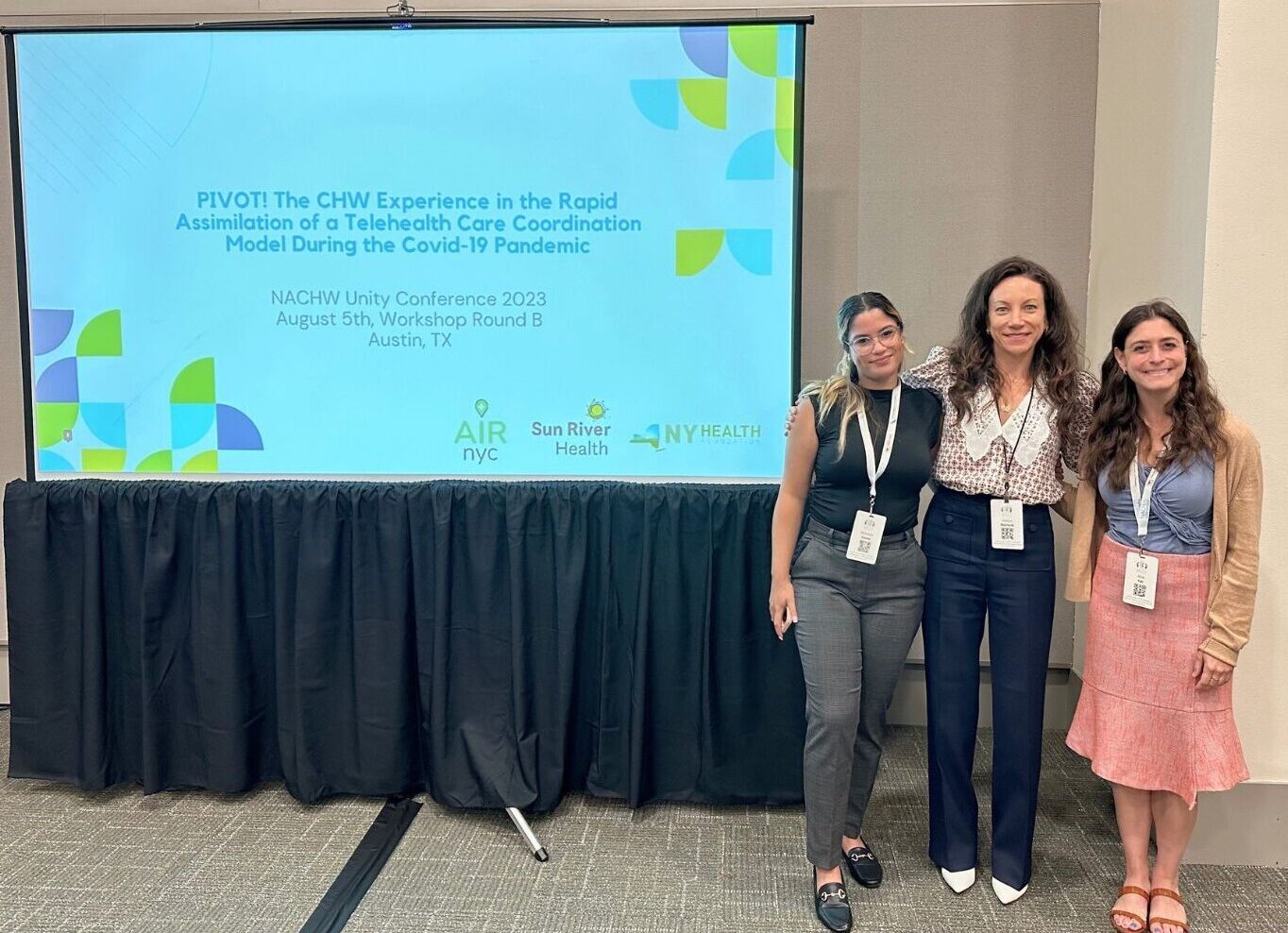
Goal
Deploy activist model to achieve broad policy impact
Progress
- NYHealth grantees played key roles in educating policymakers and advocating for and achieving policy wins to improve health care protections and food access for New Yorkers.
- New York State enacted additional medical debt protections for consumers. One new law prohibits agencies from including medical debt of any amount on credit reports, making New York the second state in the nation to do so.
- Foundation-supported work resulted in a major statewide expansion of free school meals regardless of income. Approximately 83% of students statewide will now have the food they need to be healthy and learn well.
- NYHealth testified and provided public comments to local, State, and federal policymakers on various issues:
- New York City veterans’ health needs
- Expanding and strengthening primary care
- Healthy school meals for all students
- Protections against medical debt
- Health insurance coverage for immigrants
- Medicaid reimbursement for Community Health Workers
What this means
We are a changemaker as well as a grantmaker. Using our reputational and human capital enhances our impact beyond funding.
NYHealth worked with grantees and policymakers to make important strides in a number of areas. More work is needed to ensure effective implementation, so policies achieve their potential.
NYHealth continues our commitment to advocacy by providing expert testimony to decision-makers. Actively using our voice informs and influences policy.
Enhancing Impact

Goal
Advance racial health equity in our external and internal practices
Progress
- Completed engagement with a racial equity consultant who worked with staff across the organization to implement discrete changes and initiatives to advance equity.
- Released an equity-focused RFP in the Healthy Food, Healthy Lives program area to support organizations led by and serving people of color.
- Established a permanent staff committee focused on equity.
- Updated and refreshed organizational values statement to include equity.
- Completed additional equity-related trainings and coaching for senior leadership and staff.
What this means
NYHealth is committed to advancing racial health equity and making meaningful changes to internal and external practices.
NYHealth continues to embed equity-focused opportunities in grant programs. Across programs, we will be more explicit and intentional about racial health equity.
Policy and Research
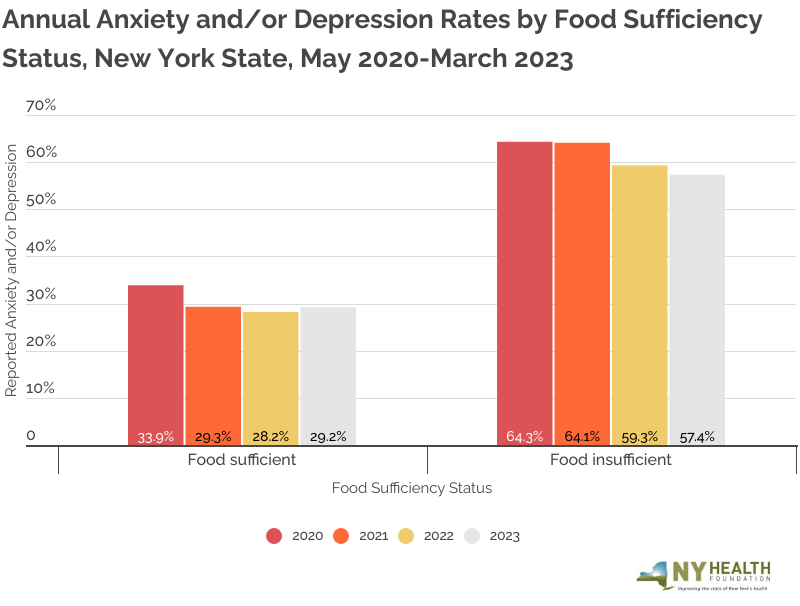
Goal
Conceive and generate original research informing New York health policy issues
Progress
- Conducted new research related to program priorities, including:
- Food insufficiency
- New York State food systems
- Veteran suicide
- Mental health
- Primary care workforce (Medical Assistants and Community Health Workers)
- Provided expert testimony and public comments on a broad range of topics, including:
What this means
NYHealth’s original analyses complement our external grantmaking activities and support the Foundation’s agenda to inform health policy issues facing New Yorkers.
The development and dissemination of our original research allows us to create connections with policymakers and other key stakeholders through webinars, public testimony, and public comments, as well as direct collaboration with relevant policy and content experts.
Promoting Healthy Food and Healthy Lives

Goal
Support food systems planning and capacity-building
Progress
- Eight regional/local planning groups are developing food systems plans with expert capacity-building support. Groups in the Finger Lakes, Buffalo, and the North Country are now ready to turn plans into action by:
- Implementing regional outreach and enrollment plans for nutrition incentive programs (e.g., Double Up Food Bucks, Fresh Connect);
- Launching a healthy food grant and loan program in partnership with city agencies and leveraging federal funds;
- Advocating for and securing changes to city zoning codes to support the expansion of public gardens; and
- Supporting a youth-led advocacy campaign for healthier food options at recreation centers and the formal adoption of those healthier options.
What this means
Different regions and communities have different needs and abilities. Instead of a one-size-fits-all approach, plans are being tailored to local realities.
Ongoing technical support increases the chance of success, ensuring that the diverse efforts are coordinated and each group can translate plans into action. Regional and local plans can ultimately integrate into a unified statewide body of work.
Promoting Healthy Food and Healthy Lives

Goal
Maximize nutrition benefit programs
Progress
- Field & Fork Network secured a $2 million annual appropriation from the State for a second year in a row to leverage the Double Up Food Bucks Program. The U.S. Department of Agriculture (USDA) also awarded Field & Fork Network $8 million. Double Up Food Bucks provides financial incentives to low-income consumers to increase fruit and vegetable purchases. Field & Fork is now operating in 32 counties and serving more than 42,000 SNAP recipients.
- The Hub on the Hill and its partner AdkAction became the first food hub in the nation to accept SNAP payments online. Field & Fork Network is now partnering with the Hub to offer Double Up Food Bucks online for Hub customers. This is the first time Double Up Food Bucks has been used online.
What this means
State and federal funding will go directly to New York State farmers and local economies. The combined $10 million investment will help more SNAP shoppers afford healthy, local foods and significantly expand the number of participating retailers. The funding allows organizations not only to scale services, but also to distribute dollars more equitably through new partnerships, including with SNAP online grocery providers.
Promoting Healthy Food and Healthy Lives
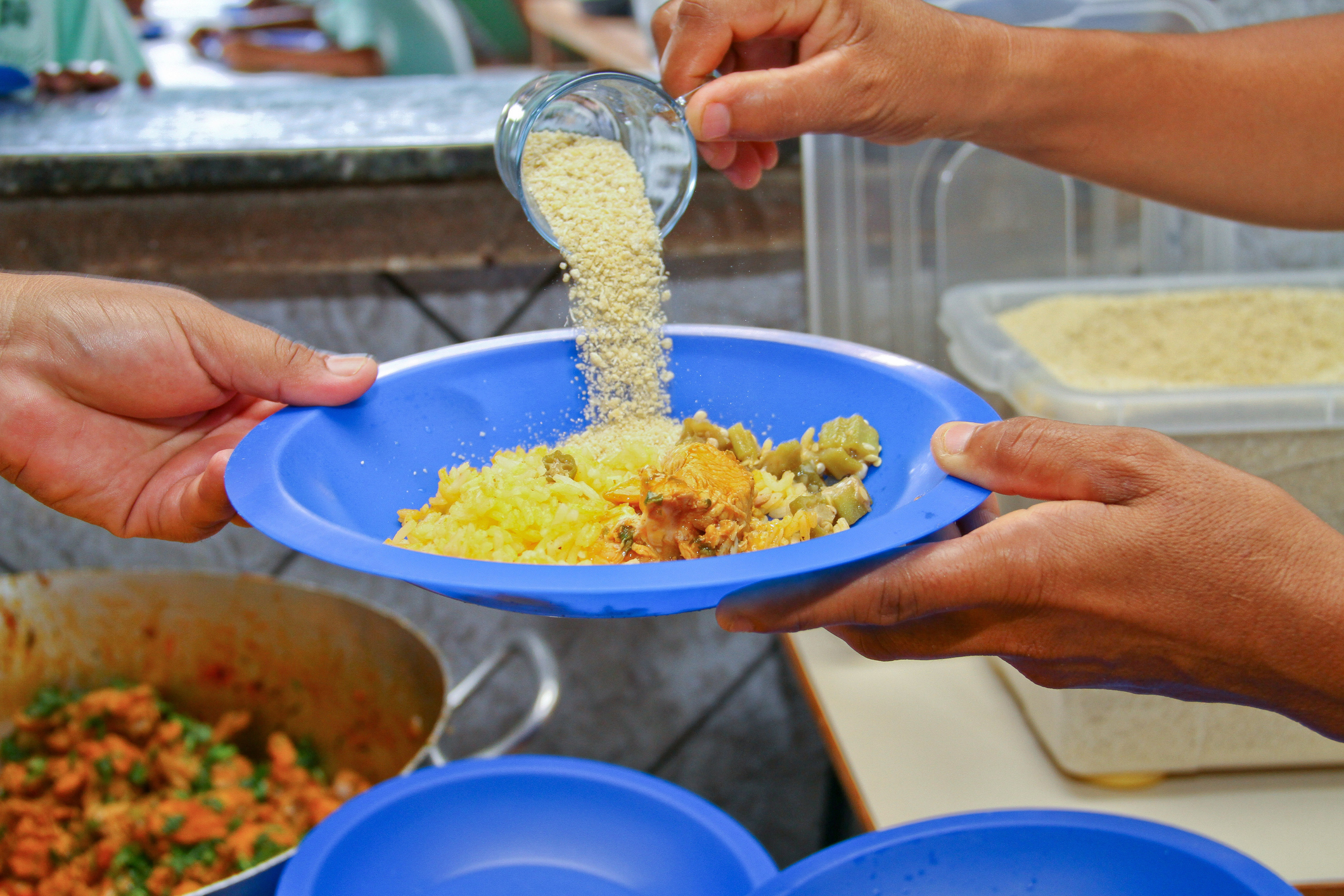
Goal
Support healthier, culturally-responsive food in public institutions
Progress
- The NYHealth-supported Healthy School Meals for All Coalition advocated for policies to make school meals free for all students. The 2023–2024 New York State budget includes $134 million for free school meals; an additional 1,100 New York schools serving 300,000 students are expected to adopt free breakfast and lunch this school year.
- The Good Food New York Coalition, comprising more than 40 food system experts, crafted a policy that would enable municipalities to use their purchasing power to promote healthier food. In 2023, legislation supporting the Good Food Purchasing Program was introduced to the New York State Legislature, where it passed the Senate and key committees in the Assembly.
What this means
Meaningful policy change takes time and dedicated effort to achieve.
Increasing access to meals in public institutions is an important first step; improving the quality and cultural relevance of these meals is also necessary. Updated procurement policy will improve hundreds of millions of meals. It could also create additional opportunities for small farms to compete for institutional contracts.
Municipalities across the country are starting to harness the power of procurement, but no other state has implemented a Good Food policy. Changes in New York State could have a groundbreaking impact and serve as proof-of-concept for other states.
Promoting Healthy Food and Healthy Lives

Goal
Promote Food Is Medicine interventions
Progress
- The Food Pantries for the Capital District’s Food is Medicine (FIM) Coalition played a lead role in advocating for the integration of FIM services into the State’s 1115 Medicaid waiver, as well as for registered dietitian services to be covered by Medicaid. In 2023, the coalition published a set of FIM recommendations for New York State to take when the waiver is implemented.
What this means
Groups across New York—including emergency food system operators, nutrition nonprofits, and health care providers—are preparing to take advantage of broader Medicaid coverage for FIM services. Many of these organizations currently have limited understanding of FIM best practices for launching, operating, analyzing, and demonstrating return on investment. With support, these organizations can roll out successful programs and build the evidence base to secure future funding streams.
Improving Veterans’ Health

Goal
Increase visibility of veterans’ health issues
Progress
- Provided expert testimony focused on strengthening resources for student veterans and preventing veteran suicide.
- Participated in a working group funded by the U.S. Department of Justice aimed at expanding and increasing the quality of Veterans Treatment Courts throughout New York State.
- Co-hosted a summit focused on expanding peer mentor programs for military veterans and held an event focused on the contributions of and discrimination experienced by Black World War II veterans.
- Cultivated and strengthened relationships with media outlets and positioned the Foundation as a source of expertise on veterans’ health in New York. Media coverage included stories about expanding access to care, housing insecurity, firearm access, and suicide prevention. NYHealth analyses continue to inform the field on topics such as veteran suicide and peer mentor services.
What this means
Beyond grantmaking, the Foundation continues to use our human capital and expertise to leverage and advance New York State’s collective work on veterans’ health.
Improving Veterans’ Health
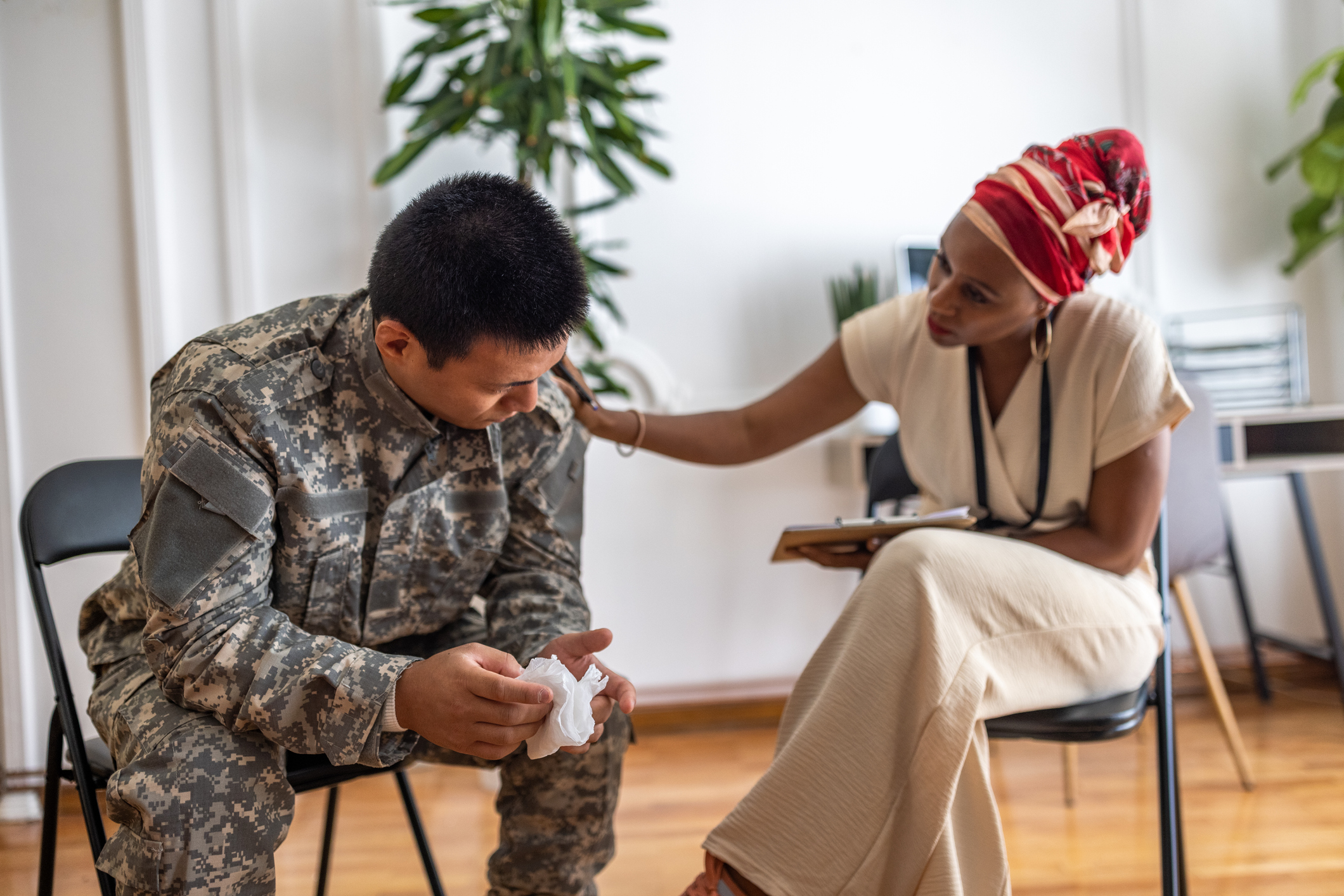
Goal
Increase access to comprehensive community-based services for veterans and their families
Progress
- Leveraged nearly $3 million in federal funding from the U.S. Department of Veterans Affairs to expand best-in-class suicide prevention services to veterans throughout New York State.
- Invested in and partnered with New York Cares, Iraq and Afghanistan Veterans of America, the Veterans Outreach Center, and the University of Rochester Medical Center to expand access to evidence-based approaches to prevent veteran suicide and increase firearm safety for veterans, their families, and community members.
What this means
Though suicide rates for veterans in New York remain stubbornly high, newly released data from 2021 show a significant reduction in firearm usage in suicide attempts. This may, in part, reflect the focus by the Foundation and others on increased firearm safety and storage.
NYHealth will continue to take a public health approach to veteran suicide prevention, focusing on (1) peer mentoring to address the social isolation that may be associated with higher risk of suicide and (2) community-based services aimed at helping veterans in crisis.
Strategic partnerships and community collaborations such as the Governor’s Challenge to Prevent Veteran Suicide remain key to our work in this area.
Primary Care
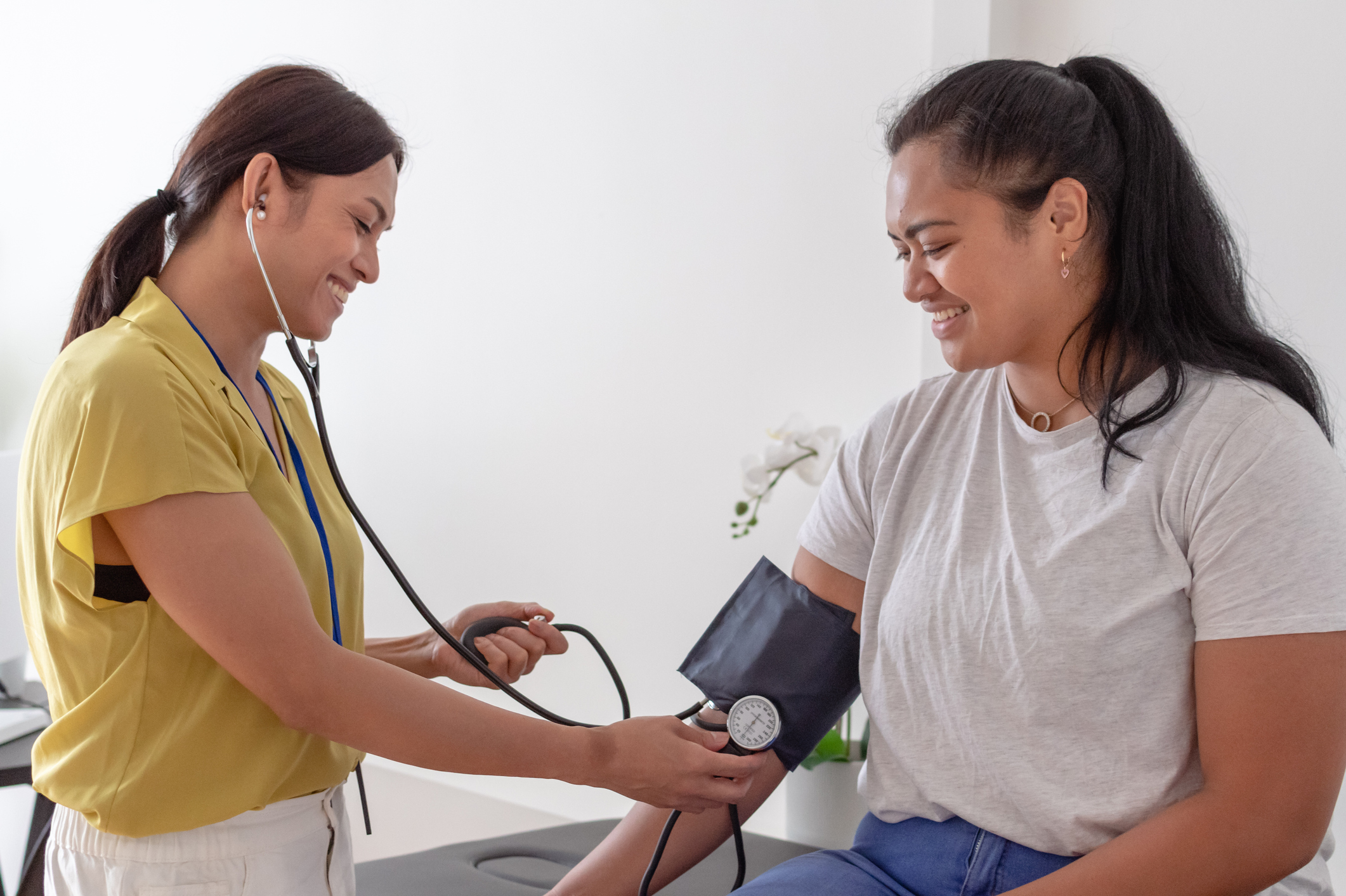
Goal
Launch new Primary Care program area
Progress
- Launched NYHealth’s Primary Care priority area in 2023. Efforts in our inaugural year included:
- Issued a Request for Proposals (RFP) to advance two of our core program strategies to expand access and advance racial health equity through primary care. This RFP elicited more than 100 letters of interest.
- Conducted site visits and attended conferences in Central New York, the Mid-Hudson Valley, the North Country, Long Island, and Western New York to learn from health care providers, community-based organizations, and local foundations about regional health needs and opportunities.
What this means
NYHealth spent the first year of this new priority area developing strategies, making connections, and laying the groundwork for meaningful impact to support a strengthened primary care system in New York State.
Efforts to expand access and advance racial health equity are synergistic. Access to high-quality primary care can address patients’ health issues and social needs that, when left unaddressed, contribute to health inequities.
This funding opportunity enables NYHealth to support replicable models to expand, innovate upon, and improve primary care delivery across the State. However, the RFP did not yield proposals to drive policy and systems change for broader impact. Moving forward, we will aim to craft RFPs and conduct outreach to elicit projects better aligned with NYHealth’s grantmaking approach.
Primary Care

Goal
Expanding primary care access and capacity
Progress
- The Primary Care Development Corporation re-animated its campaign to increase investment and rebalance health care spending toward primary care.
- NYHealth testified on behalf of increased primary care investment. We joined several other independent foundations in calling on the U.S. Department of Health and Human Services to release its Action Plan for Primary Health Care and in supporting the National Academies of Sciences, Engineering, and Medicine (NASEM) to convene an expert panel to inform federal policymaking.
- The Foundation supported the equitable development of telehealth:
- The University of Rochester Medical Center is connecting rural Finger Lakes residents to virtual primary care services through local banks.
- Manatt Health is examining evolving telehealth policies after the end of the COVID-19 Public Health Emergency and recommending changes that will preserve and expand equitable access.
What this means
| Too many New Yorkers—especially people of color, low-income people, and rural residents—continue to go without needed care. Addressing gaps in care requires new models that provide patients more entry points into the primary care system and enable primary care teams to expand their reach.
There is momentum to invest in and strengthen New York’s primary care system as New York State advances primary care-focused value-based payment models. Telehealth can improve patient access and expand provider reach. Technology has the potential to shrink or widen disparities; we need to make sure no New Yorkers are left behind. New models of virtual care can offer replicable strategies and policies can create a supportive environment so patients of all backgrounds who want and need virtual care can receive it. |
Primary Care

Goal
Enhance the Community Health Worker (CHW) and Medical Assistant (MA) workforce
Progress
- Produced fact sheets on the characteristics and varied roles of MAs and CHWs in New York State.
- Commissioned the New York Alliance for Careers in Healthcare to understand the landscape and identify opportunities to elevate MAs on primary care teams.
- Supported the Community Health Care Association of New York State (CHCANYS) to grow and maximize the MA workforce through a statewide apprenticeship program and policy advocacy to expand the scope of practice.
- Submitted comments to support proposed Medicare reimbursement for CHWs.
What this means
High-quality primary care is best delivered by a diverse team of professionals who work together and combine skills to address the needs of patients and communities. Because MAs and CHWs are often members of the communities they serve, they are well-positioned to build relationships with patients.
Acute workforce shortages and clinician burnout have meant that primary care teams are increasingly looking to adopt team-based care models that include MAs and CHWs. These workforce crises have also created a new willingness to consider options that were once off the table, like expanding the MA scope of practice.
There have also been new policy developments to sustainably support CHWs. New York State Medicaid has begun reimbursing for CHW services for select patient populations for the first time, and the federal government has finalized regulations for Medicare reimbursement.
Special Projects Fund

Goal
Supporting new endeavors and organizations
Progress
- NYHealth’s two 2023 Special Projects Fund Requests for Proposals elicited 278 requests for funding, 65% of which had a statewide, multi-county, or upstate regional impact.
- Grants addressed a variety of topics, including mental health services for young people living in rural areas, advancing birth equity through expansion of doula services within clinical teams, and integration of age-friendly practices in supportive housing sites.
What this means
The Special Projects Fund allows NYHealth to expand the scope of evidence-based program models and identify innovative projects that respond to timely health issues affecting New Yorkers.
Foundation staff reviewed several years of application data to understand trends and identify geographic areas for increased outreach. We embarked on listening tours in those areas to learn about local needs and promote our open Requests for Proposals. We saw an uptick in proposals from these regions in 2023 and expect to see more in the coming year.
Special Projects Fund
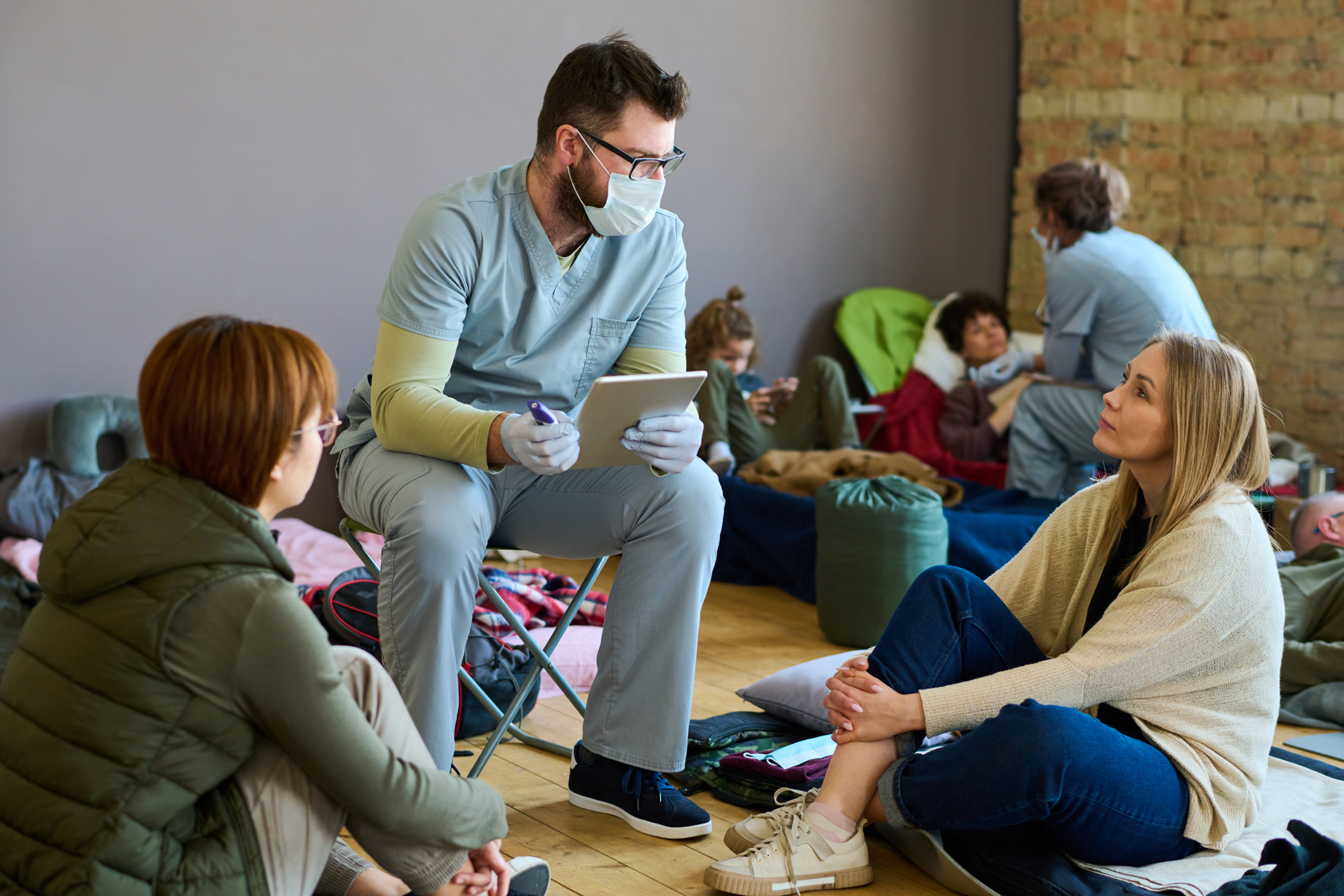
Goal
Being responsive to emerging trends
Progress
- Played a lead role in developing a consortium of funders that has committed more than $2 million to support the Keep New York Covered Initiative, a community outreach initiative to help re-enroll close to 9 million New Yorkers in health insurance coverage. The initiative, led by the Community Service Society, is mobilizing community-based organizations across the State to conduct marketing and outreach activities. Efforts are proving successful; New York ranked in the top five states keeping families and children enrolled in Medicaid at the end of the year.
- Addressed the ongoing needs of New Yorkers experiencing the effects of Long COVID. NYHealth awarded grants to NYC Health + Hospitals and Long COVID Justice to support a patient-centered approach to connect patients to care, train primary care providers, and engage patients and communities to identify treatment needs and preferences.
- Addressed health care needs stemming from a large influx of migrants and asylum seekers in New York City. Grants are supporting culturally and linguistically appropriate health navigation and mental health support.
What this means
The Special Projects Fund allows NYHealth to respond to unanticipated health emergencies, timely policy shifts, and emerging health-related trends.
Communicating Effectively

Goal
Increase the visibility, credibility, and influence of the Foundation and our grantees
Progress
Publishing
- Published 11 reports and 13 commentaries, in addition to 13 grant outcome reports.
- Published 6 op-eds and letters to the editor.
Traditional Media
- Received 110 media hits.
Convening
- Held 31 convenings, including the Foundation’s first in-person events since the onset of the COVID-19 pandemic. We hosted two large conferences, on veterans’ health and healthy food, and held webinars on topics including telehealth, the opioid crisis, mental health, and medical debt.
E-mail/Social Media
- Maintained nearly 17,000 contacts on our e-mail lists.
- Averaged a 34% open rate (industry standard is 37%) and a click rate of 6% (industry standard is 4%) for e-mail blasts.
- More than 7,000 Twitter/X followers and more than 1,600 LinkedIn followers.
Website
- Website traffic increased by about 13% compared with 2022.
What this means
A robust and proactive communications program is a fundamental part of the Foundation’s operating model. Communications shape the visibility, reputation, influence, and impact of the Foundation and the work supported through our grantmaking.
Although our media profile was high in 2023, we continue to adapt to the evolving media landscape, which includes a growing share of non-traditional outlets like newsletters and social media groups.
Twitter has historically been our primary social media channel and our audience there is holding steady. But given the changes to the platform, we are continuing to monitor the landscape and invest more energy in LinkedIn.
Although website traffic increased modestly in 2023, our online ads underperformed. We are working with a consultant to improve our advertising tactics and stay abreast of emerging search optimization trends.
Investing and Operating Effectively

Goal
Strong endowment/ investment performance
Progress
- Performance in 2023 was strong. Investment return for the year was 18.6%, the second highest in the Foundation’s history.
- As of December 31, 2023, the 3-year compound annual return on endowment investments was 4.3%, net of fees.
- Investment performance relative to peers for the 3-year period ending September 30, 2023 (latest comparison available) ranked in the bottom quartile.1 Our returns since inception are above median.
1 Peer data are based on a survey conducted by Cambridge Associates; “Peers” are defined as foundations with less than $500 million in assets. There are currently 60 foundations contributing such data.
What this means
The Foundation’s assets today are higher than they were at inception, despite having spent $267 million on grants and operations.
The Foundation is monitoring signs of continued volatility in investment markets.
Investing and Operating Effectively

Goal
Strong internal management and customer service
Progress
- NYHealth was certified with another clean audit.
- The average rating by grantees of NYHealth staff members’ responsiveness was of 6.51 (out of a 7-point scale), placing NYHealth highly relative to peer foundations.2
- In 2023, all grantees received their initial payment within an average of 12 days of receiving an award notice.
2 Based on the 2022 Center for Effective Philanthropy Grantee Perception Survey.
What this means
Receiving a clean audit each year reflects our commitment to operational efficiency and transparency.
Our goal is to continue to improve our customer service to grantees. Providing timely funding is especially important for smaller organizations working on time-sensitive issues.


